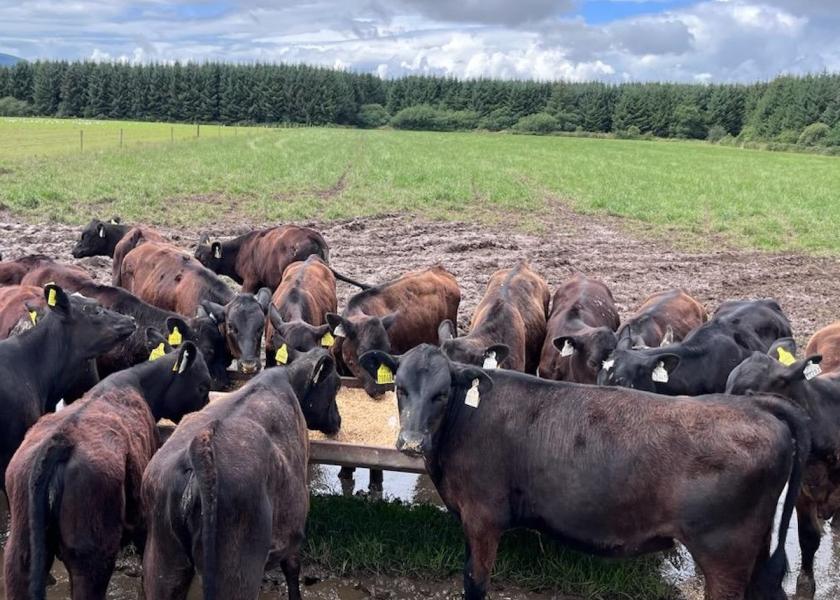'One Black Mark'

Liver abscesses continue to be the one black mark in an emerging vein of the dairy industry that otherwise is mostly rosy: beef-cross cattle.
According to the National Association of Animal Breeders (NAAB) units of beef semen sales increased by 260% from 2017 to 2021, largely due to the strategic shift by dairy producers to capture more value for their surplus calves. Those beef-on-dairy-bred calves have been a welcome addition to U.S. feedlots, as the U.S. beef cow herd hit historically low numbers in roughly the same timeframe.
But the challenge of liver abscesses in finished beef cross cattle continues to frustrate feeders and packers. Severe liver abscesses can negatively impact cattle performance in terms of lower bodyweight, carcass yield, and dressing percentage. They also can cause livers to be condemned at slaughter, and may result in even more condemned tissue if the infection spreads to other organs and tissue. And if a liver abscess ruptures during slaughter, it necessitates stopping the production chain at the packer so equipment can be cleaned and sanitized. This can dramatically affect a plant’s daily production yield. In large plants, industry estimates suggest chain stoppage can result in productivity losses of up to $3,000 per minute.
At the 34th Florida Ruminant Nutrition Symposium, Dr. Tiruvoor Nagaraja, PhD, professor of microbiology atKansas State University, presented a review of liver abscesses in beef-on-dairy animals, and the industry’s knowledge of the issue to date.
Nagaraja said that although no scientific studies have yet been performed to validate the higher levels of liver abscesses in fed cattle with dairy genetics, “there is consensus that the incidence in beef-on-dairy cattle is 2 to 3 times greater than crossbred beef cattle.”
Liver abscess can range from one to hundreds in a single animal, and vary in size from a pinpoint to more than 15 cm in diameter. So far, no reliable diagnostic tools have been developed to detect them, as both blood tests and ultrasound have failed to reliable identify liver abscesses prior to slaughter.
Nagaraja explained that liver abscess formation is likely the result of “good” bacteria that helps digest feedstuffs in the rumen escaping to the bloodstream and setting up shop in the liver, where they create infection sites that progress to abscesses.
The overgrowth of the bacteria – the two most common being Fusobacterium necrophorum and Trueperella pyogenes -- is thought to be caused by a highly acetic environment (acidosis) that causes lesions to form on the rumen wall (rumenitis). The bacteria then travel via the bloodstream from the gut to the liver, creating the “acidosis-rumenitis-liver abscess complex.”
Why dairy beef and dairy cross animals seem to be more susceptible to liver abscesses is not completely understood. But Nagaraja said their increased incidence is associated with the following dietary feeding programs:
Inadequate roughage in the diet. Diets containing rapidly fermentable grains -- such as wheat and barley – or processed grains like steam-flaked or high-moisture corn.
Long feeding duration at the feedlot stage. Dietary adjustments to address these contributors could help to lessen the incidence of liver abscesses. Further, Nagaraja said the antibiotic tylosin, fed with veterinary oversight, is the most effective antibiotic to control liver abscesses.
However, concern over the development of antimicrobial resistance, and the desire to reduce antibiotic use in food-animal production, are fueling research in alternative interventions to control liver abscesses. To date, two vaccines have been developed for that purpose, with one subsequently being withdrawn from the market.
Feeding probiotics and essential oils as feed additives is also being explored. The essential oils limonene and thymol have been shown to successfully inhibit growth of Fusobacterium necrophorum. More research continues to potentially solve this compelling issue for both the beef and dairy industries.
For more on beef-on-dairy, read:
- Beef-on-Dairy Explored at Milk Business Conference This November
- Is Beef the New Cash Cow for Dairy?
- Rapidly Growing Beef-on-Dairy Segment Holds Promise for All Stakeholders







